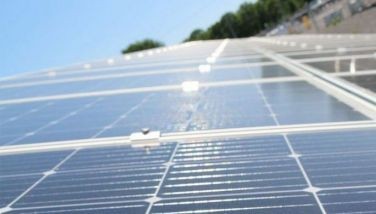WB, ADB lend record $116 billion in 2009
MANILA, Philippines - Two of the biggest multilateral financing institutions extended loans, aid, grants and guarantees worth a record $116 billion last year.
The World Bank accounted for $100 billion while the Asian Development Bank (ADB) was responsible for $16.1 billion.
The World Bank’s financial commitments include safety nets for the poor, infrastructure to create jobs and build a foundation for recovery, agriculture to support small farmers, and microfinance to help small and micro enterprises.
Through its operational agencies, the World Bank lent out $6.3 billion in fiscal year 2009, and another $5.1 billion in the first nine months of the current fiscal year. These agencies are the International Bank for Reconstruction and Development (IBRD) and the International Development Association (IDA).
Meanwhile, World Bank commitments supporting social safety net programs for the poorest and most vulnerable citizens in the poorest countries increased exponentially from $253 million in fiscal year 2008 to $3.1 billion the following year, and to $2.1 billion so far in fiscal year 2010.
The International Finance Corp. (IFC) — the private sector arm of the World Bank Group which provides long-term loans, equity, structured and securitized products, and advisory and risk mitigation services to private enterprises in developing and transition countries — made investments reaching $16.6 billion. To address key vulnerabilities in the global economy, the IFC launched special vehicles for trade finance, microfinance, bank capitalization, infrastructure and distressed debt.
The Multilateral Investment Guarantee Agency (MIGA) committed over $2 billion in providing political risk insurance or guarantees to promote foreign direct investment in developing countries.
Meanwhile, the ADB said its financial operations reached a record $16.1 billion or a 42 percent increase over the $11.3 billion approved the previous year.
The increase was made possible by the agency’s fifth general capital increase, which tripled its capital base from $55 billion to $165 billion, the biggest in ADB history and the first in 15 years.
From the $16.1 billion operational financing comprised loans and grants of $14.3 billion, guarantees amounting to $397 million, $850 million for a trade finance facilitation program, $220 million in equity investments, and $267 million in technical assistance.
The loans included $2.5 billion in assistance under the Countercyclical Support Facility — a short-term, budget support instrument to help crisis-affected members. ADB also mobilized co-financing amounting to $3.2 billion.
The top three recipients of ADB assistance were Vietnam, Indonesia and the People’s Republic of China. The Philippines is the seventh largest recipient of ADB assistance.
About 81 percent of total assistance went to the five core operational areas of infrastructure, finance, education, environment, and regional cooperation. About 65 percent of ADB investments were allocated to infrastructure and the remaining 35 percent for environmental sustainability projects.
- Latest
- Trending
































